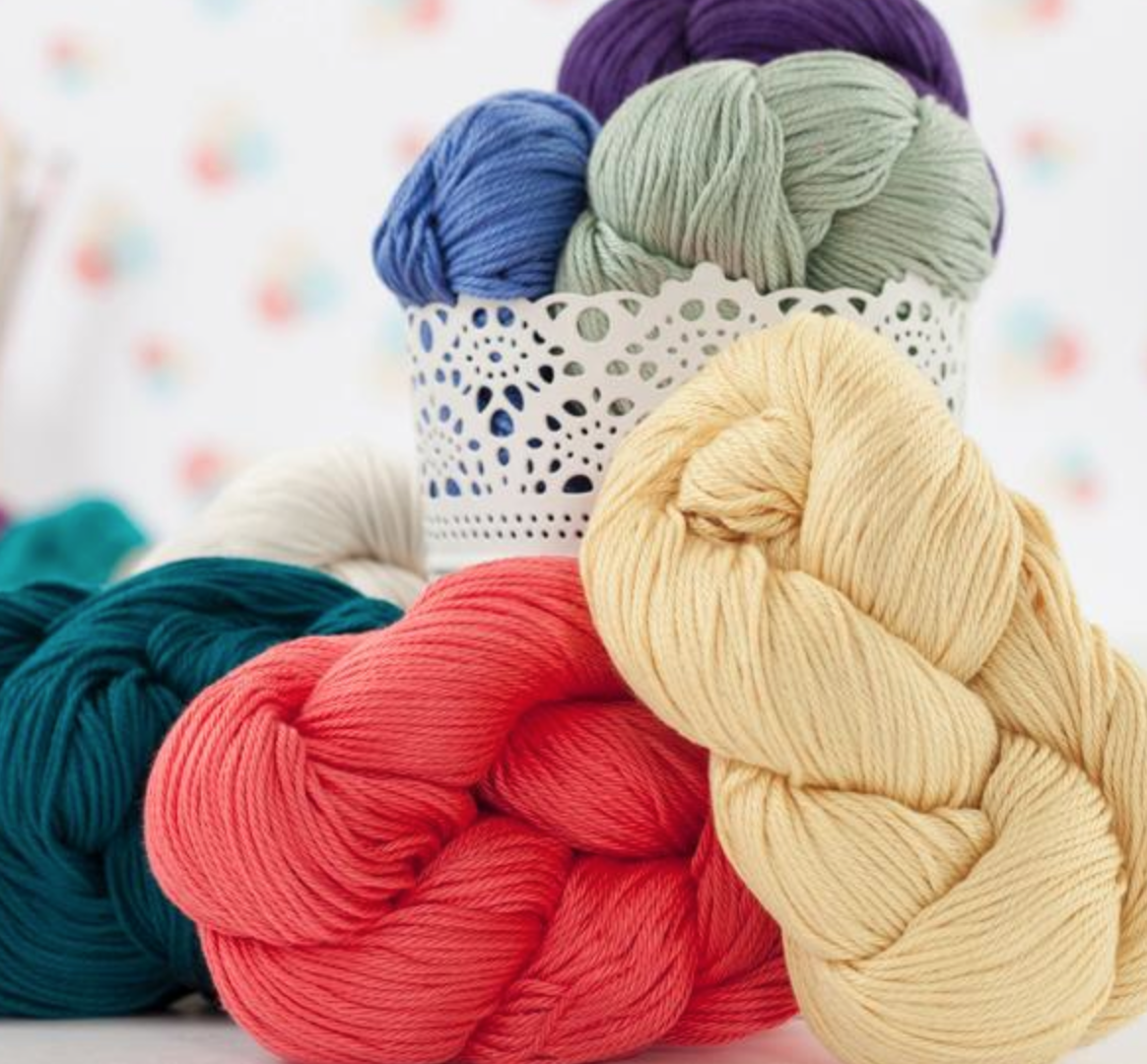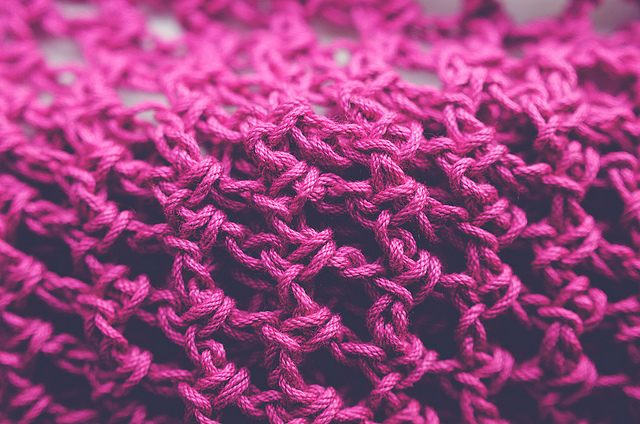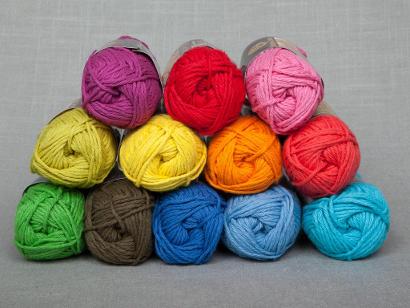Cotton yarn is an ideal choice for crochet as we move into the warmer parts of the year here in the Northern Hemisphere. Cotton fiber creates breathable items that are also wonderfully sturdy and durable.
Here are ten tips to consider when crocheting with cotton yarn.

Cascade Ultra Pima Cotton Yarn
1. Yarn weight matters.
Cotton tends to be a heavy yarn, especially once it has gotten wet. Pay particular attention to the yarn weight when choosing projects. Cotton thread and sock weight cotton will be less dense, of course, than a worsted weight or bulky weight cotton. Of course, if you’re working on a thick project that you want to be really heavy (such as a winter blanket or a big crochet basket) then the heaving yarn weights make sense.

Image via Bluprint member KnotSewCute
2. Cotton is for items that don’t require stretch.
As a rule, cotton doesn’t stretch. This makes it a great choice for items that are intended to be sturdy and durable. For that reason, cotton yarn is great for making crochet baskets, dishtowels, market tote bags and amigurumi. Lion Brand Kitchen Cotton Yarn is one example of a 100% cotton yarn often used to make kitchen towels and potholders.
Note that when cotton does stretch (such as when you hang a wet piece of cotton from a line), it is inelastic so it won’t bounce back into its original shape. It will stretch out like a big yawn and then just hang there, slack-jawed and unable to return to normal.
The most magical technique every knitter should know…
Demystify blocking for finished projects that look, fit & feel as wonderful as you imagined.Enroll Here Now »
3. Use textured stitches for holding shape.
If you want to create cotton items that don’t stretch out that way when wet then you should crochet textured stitches. Post stitches, especially those that lock around each other to make crochet cables, are a great choice.

Image via Bluprint blogger Lisa Gutierrez
4. Cotton blends may work better for wearables.
Because cotton doesn’t stretch, it can sometimes be unforgiving for wearable items where you might want more drape. For those projects, you might want to choose a cotton blend. Rowan Wool Cotton Yarn is an example of a blend that’s 50% cotton, 50% merino wool.
5. Pick “organic cotton” to be eco-friendly.
Many people choose cotton yarn because it’s a natural fiber and they seek to engage in earth-friendly crochet. That’s great! However, if that’s why you’re choosing cotton, then you want to be careful to select “organic cotton yarn”. Pesticides are frequently used on cotton that’s not organic. Dayna Boyer of Canadian Living explains:
“The website for the Sustainable Cotton Project says 10 per cent of all agricultural pesticides produced worldwide are used on cotton. So by purchasing organic cotton, you’re sending a strong message about the use of pesticides on plants.”

Lion Brand Kitchen Cotton Yarn
6. Get familiar with the term “mercerized”.
Mercerized cotton has been treated in such a way that it appears more shiny. The downside is that it’s usually less absorbent than un-mercerized cotton. Either one can be a great choice for crochet, but you have to pick wisely depending on the characteristics you seek in your final product. You’ll also need to consider this carefully if you want to dye your own cotton yarn. Crochet designer Emjay Bailey of Nerdigurumi explains:
“If the yarn is not mercerized (a process that smoothes the fiber, makes it less likely to shrink when washed and makes the yarn have a glossier, shinier finish), each loop in a stitch is locked into place from the friction of the other loops. The strands don’t slip or slide or shift, meaning the integrity and shape of the stitches and rows hold out well and finished ends woven in are pretty much locked in.”
7. Block your cotton.
As we’ve discussed, cotton lacks elasticity. When it stretches, it typically doesn’t bounce back. The power in this is that you can use blocking to stretch your cotton crochet items into the right shape and the shape will tend to hold after blocking. Alternatively, if you don’t want the shape to change much when you are blocking your cotton items, then you should use steam blocking (not wet blocking).
Bonus tip: You can get some great crochet blocking tips from Andrea Sanchez’s article “Get the Kinks Out with These Tips for Blocking Crochet“.
8. Washing makes cotton softer.
You will notice that your cotton crochet items get softer and softer over time. If you create something and it feels too rough, just throw it in the wash a few times and you should notice that it softens up a bit.
9. Matte hooks work best for cotton.
Cotton yarn tends to slip around too much on crochet hooks that have a slick, polished finish. Choose crochet hooks that have a matte finish or a bit of grip. Avoid acrylic crochet hooks when working with cotton.

Image via Bluprint member Melmaria
10. Use cotton for photographs.
Think cotton if you are creating your own crochet stitch tutorials or other photographs for a blog project. That’s because cotton has terrific stitch definition.
What is your favorite fiber type or fiber blend? Cast your vote in the comments section!
The most magical technique every knitter should know…
Demystify blocking for finished projects that look, fit & feel as wonderful as you imagined.Enroll Here Now »

Wool and wool blends that are mostly wool.
Thank you! This is a very useful article for me.